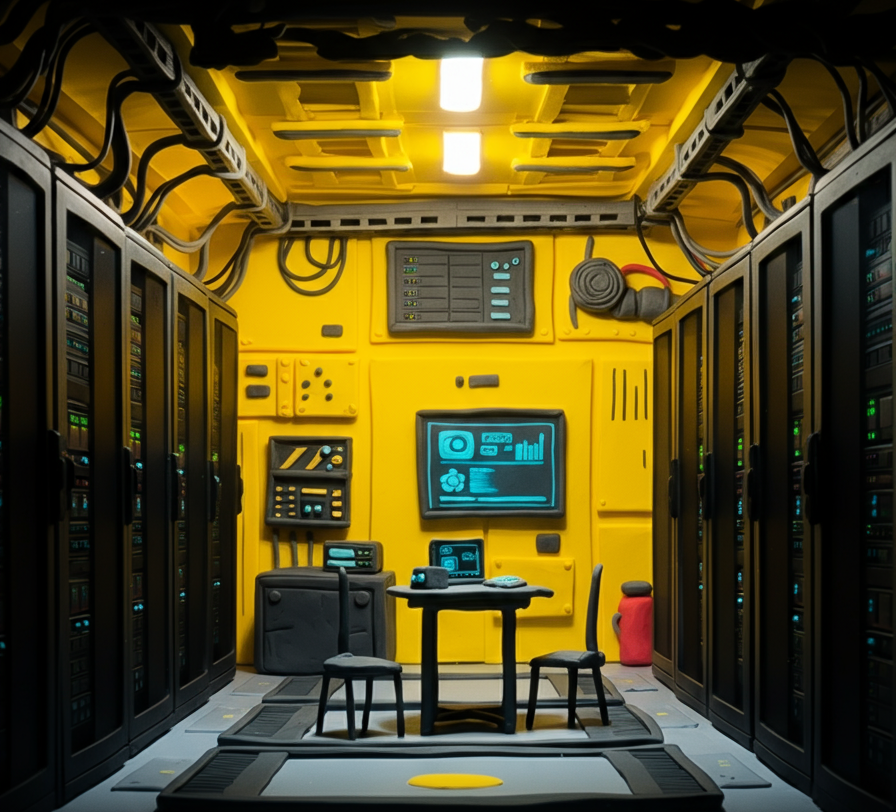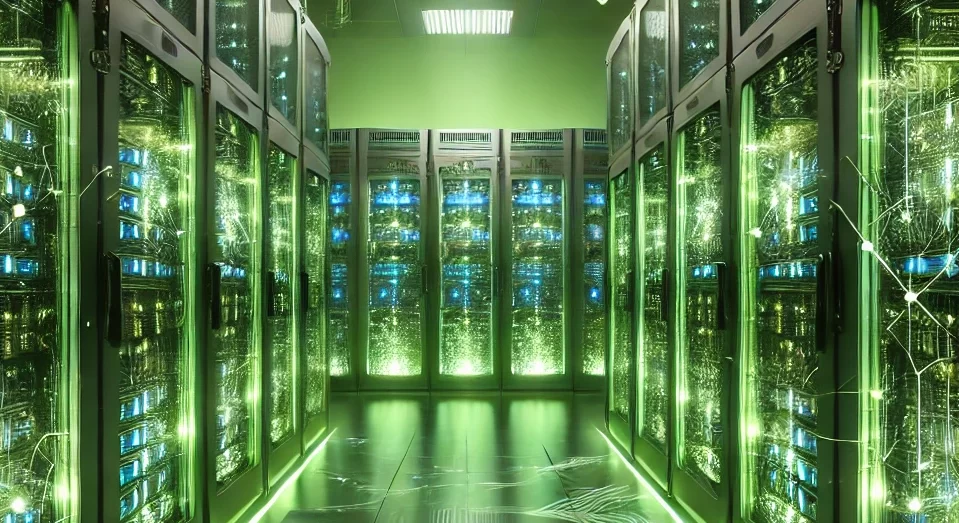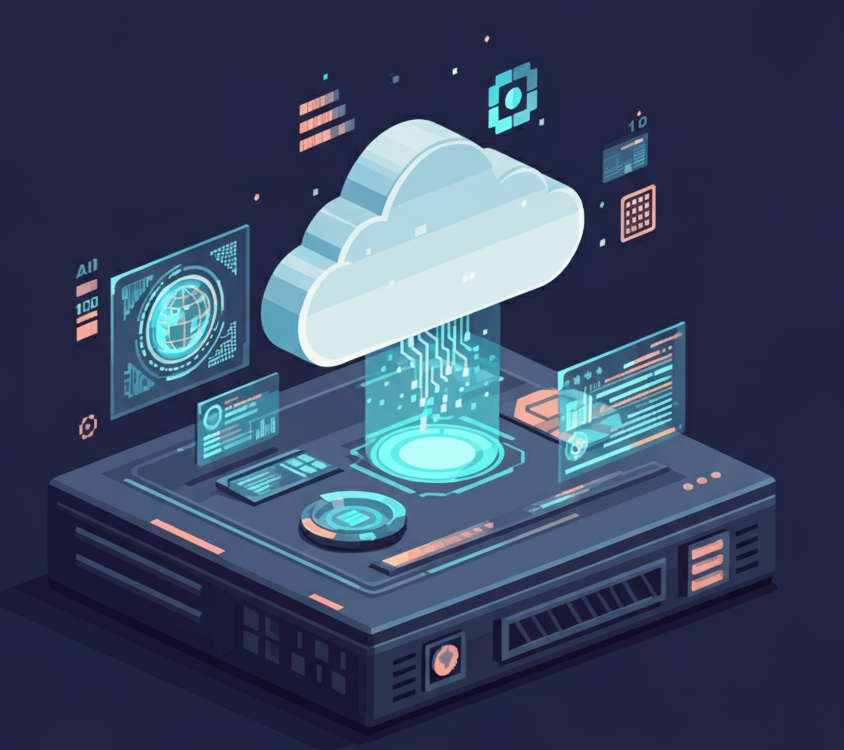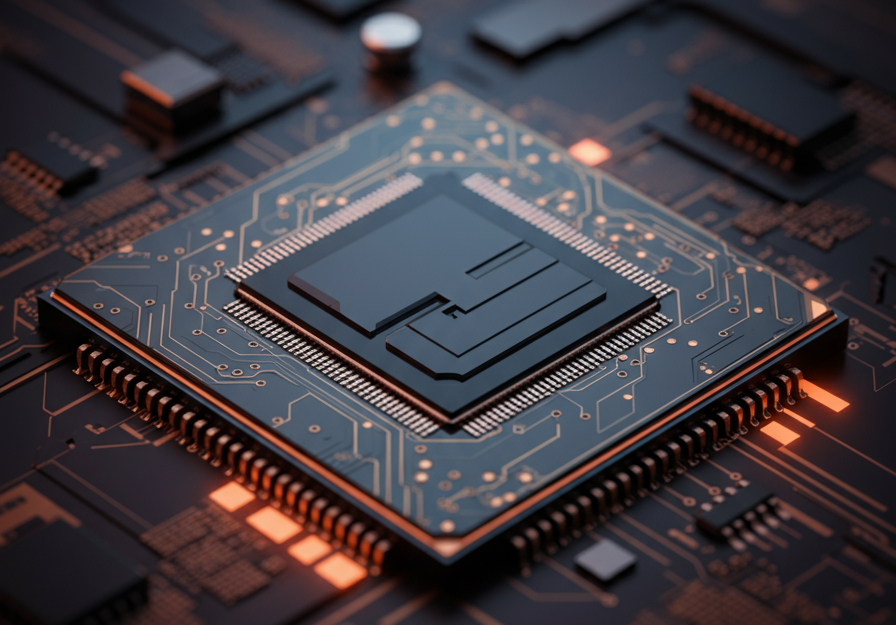Artificial Intelligence (AI) and machine learning are the backbones of modern technological advancements. However, the infrastructure supporting these technologies—data centers—requires substantial resources, particularly energy and water. With AI’s exponential growth, concerns have arisen about the sustainability of these resources. This article explores whether we will have enough power and water to support large AI data centers in the future.
The Energy Demand of AI Data Centers
Increasing Consumption of AI Data Centers
Artificial Intelligence (AI) data centers consume vast amounts of electricity to power servers, cooling systems, and other auxiliary equipment. According to a report by the International Energy Agency (IEA), data centers account for about 1% of global electricity demand in 2022. With AI applications such as deep learning requiring intensive computational power, this demand is expected only to increase.
Furthermore, specific segments within AI are particularly energy-intensive. For instance, training a single AI model can take weeks or months of continuous processing on specialized hardware like GPUs (Graphics Processing Units) and TPUs (Tensor Processing Units). According to a Massachusetts Institute of Technology study, training a large deep learning model can emit as much carbon dioxide as five cars during their lifetimes. Similarly, OpenAI’s GPT-3, one of the most significant language models, requires about 285,000 kWh to train, roughly equivalent to the annual energy consumption of 33 US households. These staggering figures highlight the growing concern about the sustainable energy consumption of AI data centers.

Energy Efficiency Improvements
The good news is that advancements in energy efficiency are helping to mitigate some of the rising consumption. Innovations such as more efficient processors, improved data center designs, and the adoption of renewable energy sources play a significant role. Companies like Google and Microsoft are leading the way by powering their data centers with wind, solar, and hydroelectric energy.
In recent years, processor efficiency has made significant strides. For example, modern processors can perform more computations per watt of energy consumed, reducing the energy needed for AI tasks. According to SPEC’s Power Committee’s report, advances in semiconductor technology have achieved a performance improvement of approximately 10-20% per year while maintaining or reducing energy consumption.
Moreover, improved data center designs contribute significantly to energy efficiency. Data centers can reduce the energy required to maintain optimal operating temperatures by leveraging advanced cooling technologies, such as liquid and free-air cooling. A study published by Boyd found that efficient cooling strategies can reduce energy consumption associated with cooling by up to 40%.
Renewable energy adoption is another critical element in enhancing data center energy efficiency. Tech giants are making substantial investments in renewable energy projects. Google, for instance, announced it had matched 100% of its global electricity consumption with renewable energy purchases for the third consecutive year in 2020. Similarly, Microsoft has committed to being carbon-negative by 2030, which includes sourcing renewable energy for its data centers.
These data points underscore the positive impact of energy efficiency improvements on reducing the overall energy footprint of AI data centers. Together with technological advancements, these efforts form a crucial part of the strategy to ensure the sustainability of AI growth.
The Water Footprint of AI Data Centers
Cooling Requirements
Water is another critical resource for AI data centers, primarily used for cooling. Efficient cooling is essential to prevent server overheating, which could lead to downtime and hardware damage.
Water-based cooling systems are highly effective in maintaining the necessary temperatures for optimal server performance. Data centers use various water cooling methods, including evaporative cooling, water-cooled chillers, and liquid immersion cooling. Each method has its own water usage implications.
Evaporative cooling, for instance, is the process of evaporating water to cool the air. This method is efficient, but can consume much water, especially in extensive facilities. According to a US Department of Energy study, an evaporative cooling system can use up to 15-20 gallons of water per kWh of power consumed by the data center. This means that for a data center to consume 100,000 kWh, approximately 1.5-2 million gallons of water would be required, which is significant.
On the other hand, water-cooled chillers use water to absorb heat from the data center environment and dissipate it through cooling towers. This method is effective in reducing electricity consumption compared to traditional air-cooled systems. However, it also has a high water usage footprint. A Lawrence Berkeley National Laboratory report indicates that water-cooled chillers can consume between 1.8 to 2.1 million gallons of water annually per megawatt of power used by the data center.

Liquid immersion cooling is a new technology in which servers are submerged in a thermally conductive but electrically insulating liquid. This method dramatically increases cooling efficiency and can reduce water and energy use. However, it requires significant initial investment and infrastructure change. According to a study conducted by 451 Research, liquid immersion cooling can reduce water usage by up to 80% compared to traditional cooling methods.
These different cooling techniques illustrate the pivotal role of water in maintaining the operability of AI data centers. As AI grows, optimizing these cooling methods will be critical to ensuring sustainable water usage alongside energy efficiency improvements.
Sustainable Practices: Google and Facebook examples
Many AI data centers are adopting sustainable water practices to address this issue. Some are implementing closed-loop cooling systems that recycle water, significantly reducing waste. Others are moving to regions with abundant water supplies or using alternative cooling methods such as evaporative and liquid immersion.
For example, Google has made strides in optimizing water usage by using recycled water in some of its data centers. In its Atlanta data center, Google uses recycled water, which accounts for 30% of its total water usage for cooling. This significantly diminishes the demand for potable water. Similarly, Microsoft has been using innovative water management strategies, including rainwater harvesting and stormwater management, to supplement its water requirements.
Moreover, companies are increasingly investing in technologies that enhance water use efficiency. For instance, Facebook’s data centers in Prineville, Oregon, utilize direct evaporative cooling and an indirect evaporative cooling system, significantly lowering water usage by up to 80% compared to traditional chiller plants. This hybrid method of using air and water for cooling demonstrates a compelling blend of sustainability and performance.
Data-driven approaches also play a crucial role in sustainable water practices. By leveraging IoT sensors and AI algorithms, data centers can monitor and analyze water usage in real time, identifying inefficiencies and optimizing cooling processes. According to a report by the Uptime Institute, facilities that integrate AI-based monitoring can reduce water consumption by up to 25% by more accurately predicting cooling needs and adjusting operations accordingly.
These sustainable practices exemplify the industry’s commitment to reducing the environmental impact of AI data centers. As technologies evolve and more innovative solutions are developed, the synergy between energy efficiency and water sustainability will become increasingly important, leading to a greener and more responsible AI infrastructure.
Future Challenges and Solutions
Resource Scarcity
The increasing demand for energy and water raises concerns about their potential scarcity. Regions facing water shortages or energy constraints may need to help accommodate the growing needs of AI data centers.
These concerns are not unfounded. A report from the World Economic Forum highlights that by 2030, the world could face a 40% gap between demand and supply of water if current consumption patterns continue. This scenario poses a significant risk for AI data centers, especially those in arid regions or areas prone to droughts. For instance, states like California and Nevada in the United States, which are hot spots for tech companies and data centers, are already grappling with severe water shortages.
On the energy front, the International Energy Agency (IEA) forecasts that global electricity demand for data centers could reach 3,200 terawatt-hours (TWh) by 2030, up from around 200 TWh in 2010. This substantial increase in power usage amplifies the urgency for sustainable energy solutions. Data centers in regions with limited access to renewable energy sources may face significant operational challenges, exacerbating their environmental footprint.
Moreover, as AI data centers expand their operations to meet the growing demand for AI-driven services, they may contribute to local resource depletion. A 2017 study by Greenpeace indicated that the tech industry’s energy consumption could potentially double by 2025 unless there is a concerted effort to transition to renewable energy sources. This consumption increase will strain energy resources and the water required for cooling these data centers.
Innovative solutions, such as utilizing renewable energy sources, enhancing energy efficiency measures, and developing advanced water recycling systems, are vital to addressing these issues. Policymakers and industry leaders must collaborate to create frameworks that ensure the long-term sustainability of AI data centers, thereby mitigating the risks associated with resource scarcity. Furthermore, ongoing research and development in eco-friendly technologies will be essential in overcoming the resource challenges posed by the digital revolution.
Innovation and Regulation
Innovation will be crucial in addressing these challenges. Continued advancements in energy-efficient technologies, alternative cooling methods, and renewable energy can help ensure the sustainability of AI data centers. For instance, recent innovations in direct current (DC) power distribution have improved energy efficiency by up to 15% compared to traditional alternating current (AC) systems. Additionally, emerging technologies like silicon photonics and AI-driven dynamic cooling systems are paving the way for even more significant efficiency gains. Companies investing in these technologies can significantly reduce their dependence on non-renewable energy sources and lower their carbon footprint.
Moreover, advanced cooling methods, such as liquid and free cooling, have gained traction. Studies have shown that liquid cooling can be up to 50% more efficient than traditional air-cooling systems due to its superior thermal conductivity and ability to manage higher heat densities. Free cooling, which uses external environmental conditions to reduce reliance on mechanical refrigeration, can cut energy consumption by as much as 30% in suitable climates.
Furthermore, government regulations and policies promoting sustainable practices will play a vital role. For example, the European Union’s Data Center Code of Conduct provides guidelines and best practices to improve data center efficiency and reduce environmental impact. Compliance with such regulations can lead to substantial cost savings and operational efficiencies. In the United States, state-specific initiatives like California’s Title 24 energy standards mandate rigorous energy efficiency measures for new data centers, contributing to reduced energy consumption and encouraging green technologies.
Data supports that these regulatory frameworks are making a meaningful impact. According to a report by the European Commission, adherence to the Data Center Code of Conduct has led to an average energy saving of approximately 20% for participating facilities. Similarly, the American Council for an Energy-Efficient Economy (ACEEE) analysis found that state energy codes could reduce data center energy consumption by 25% by 2030.
Therefore, the synergy between innovation and regulation is integral to the sustainable development of AI data centers. As technological advancements push the boundaries of what is possible, and as regulatory frameworks become more robust and widespread, a collaborative effort between industry and policymakers will be essential in overcoming the resource challenges posed by the digital revolution. This concerted approach will help ensure that the benefits of AI can be realized without compromising environmental sustainability.
Conclusion
While large AI data centers’ rising energy and water demands pose significant challenges, technological advancements, and sustainable practices offer promising solutions. Ensuring a balance between resource consumption and technological growth will be crucial in securing the future of AI infrastructure.



